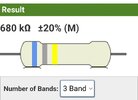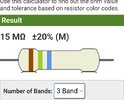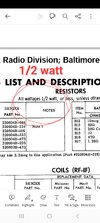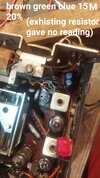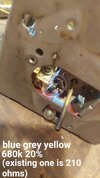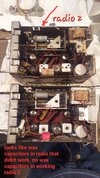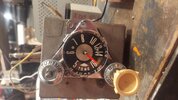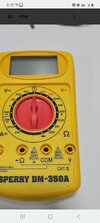hotrodjohn71
New Member
Hi group.
Can you help me source 2 resistors I need for my 57 Ford truck radio?
Ive searched for about a half hour but am coming up short.
One is a 680k 20% 1/2 watt
And one is 15M 20% 1/2 watt
Thank you
Can you help me source 2 resistors I need for my 57 Ford truck radio?
Ive searched for about a half hour but am coming up short.
One is a 680k 20% 1/2 watt
And one is 15M 20% 1/2 watt
Thank you
